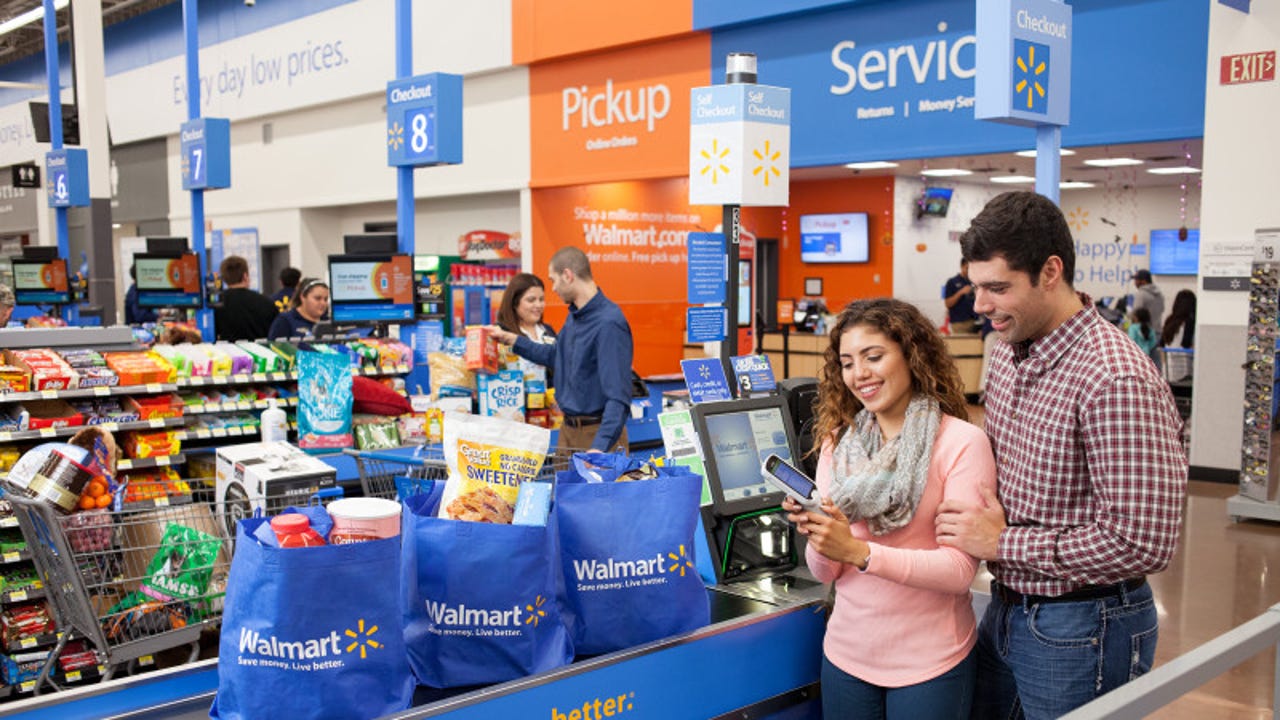Walmart tops Q2 targets on double digit ecommerce growth


Walmart's nationwide rollout of Walmart Pay was completed in June 2016.
Walmart reported better-than-expected second quarter results Thursday morning and raised its full-year earnings outlook. The world's largest retailer, fresh off of its $3 billion purchase of Jet.com, cites strong ecommerce sales and improvements to its omnichannel strategy for the earnings beat.
Walmart said its ecommerce sales increased 11.8 percent primarily due to the continued rollout of its online grocery option and growth of pick-up in stores and clubs. This is the first time in nine quarters that the retailer's online sales growth has increased quarter-over-quarter.
Walmart CEO Doug McMillon, who in previous quarters bemoaned that the retailer's ecommerce growth was too slow, touted the fact that Walmart is now the second most trafficked ecommerce site the US, behind Amazon.
As for the Jet.com acquisition, McMillon provided some more insight into how he sees the two companies lining up in the future:
Operating Walmart.com and Jet.com will allow us to reach even more customers and drive a higher level of growth more quickly.
One of the things we like about the technology [Jet] developed is that it rewards customers in real time with savings on a basket of goods and puts them more in charge of the price they pay. This empowers customers in a way that is true to the spirit of Walmart. When customers build a basket of goods online rather than ordering one item at a time, shipping economics are in their favor and ours.
Walmart's advantage has always been in providing the lowest prices on a basket, and Jet has created a unique way to deliver the lowest cost basket online. It's important to remember that customers won't see changes immediately as we await government approval, and the necessary tech platform changes, which will take time.
In other digital initiatives, McMillon highlighted Walmart's nationwide rollout of Walmart Pay, which was completed in June, and the expansion of grocery pickup to 30 more markets this quarter. The service stands out for its enormous potential and has been one of Walmart's primary focal points as the company looks to meld its mobile app, website, and brick-and-mortar stores into one seamless shopping experience.
As for the numbers, Walmart reported non-GAAP earnings of $1.07 per share on revenue of $120.9 billion, up 3.1 percent.
Wall Street was expected earnings of $1.02 per share on revenue of $120.3 billion.
Traffic to Walmart stores was down slightly but US locations open for at least a year drew positive sales for the seventh straight quarter, at 1.6 percent.
The retailer raised its full-year guidance to between $4.15 and $4.35 per share, as compared to its previous forecast of $4.00 and $4.30 a share.
Walmart's results stand in stark contrast to rival retailer Target, which on Wednesday reported a drop in same-store sales of 1.1 percent and a 9.7-percent plunge in earnings. Target said the drop was due to fewer shoppers visiting its stores and an overemphasis on marketing apparel products above other segments. Target also saw a 20-percent drop in sales of Apple products.
SEE ALSO: Why Walmart needs more than free shipping to challenge Amazon Prime |Walmart CEO outlines omnichannel retail strategy to shareholders, associates | Walmart projects 2017 revenue decline after billions invested in e-commerce | Walmart chases Amazon in game of drones | Walmart's e-commerce annual sales hit $13.7 billion